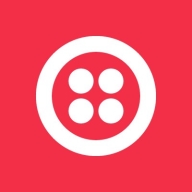

Segment and SAP Data Hub are competitive products in the data management category. Segment has the upper hand in terms of affordability and support, while SAP Data Hub offers superior integrated features for comprehensive data solutions.
Features: Segment is known for its easy-to-use tools focusing on customer data integration, streamlined data collection, and analysis. SAP Data Hub stands out for its data orchestration, pipeline management, and support for complex data infrastructure. Segment emphasizes simplicity and customer-centric data, whereas SAP Data Hub targets enterprise-level data operations.
Ease of Deployment and Customer Service: Segment offers a straightforward deployment process with efficient customer support during setup and operation. SAP Data Hub requires a more extensive setup due to its enterprise-grade tools and might add complexity, but this is balanced by excellent support and documentation for smooth transition.
Pricing and ROI: Segment presents an economical option with lower setup costs providing good ROI for businesses focusing on customer data. SAP Data Hub involves higher initial costs but offers substantial ROI for companies seeking advanced data orchestration capabilities. Segment appeals with affordability, while SAP Data Hub is an investment for extensive data handling features.

The SAP® Data Hub solution enables sophisticated data operations management. It gives you the capability and flexibility to connect enterprise data and Big Data and gain a deep understanding of data and information processes across sources and systems throughout the distributed landscape. The unified solution provides visibility and control into data opportunities, integrating cloud and on-premise information and driving data agility and business value. Distributed processing power enables greater speed and efficiency.
Segment is a customer data platform that helps organizations collect, unify, and analyze customer data from various sources. Its primary use case is to provide a single view of the customer across different touchpoints, enabling businesses to deliver personalized experiences.
The most valuable functionality of Segment is its ability to integrate with numerous data sources, such as websites, mobile apps, and third-party tools. It simplifies the process of data collection and unification, allowing organizations to easily access and analyze customer data in real time.
Segment helps organizations by providing a comprehensive understanding of their customer's behavior, preferences, and interactions. This valuable insight enables businesses to make data-driven decisions, optimize marketing campaigns, and improve customer engagement. By leveraging Segment's capabilities, organizations can enhance customer experiences, increase customer satisfaction, and drive business growth.
We monitor all Data Governance reviews to prevent fraudulent reviews and keep review quality high. We do not post reviews by company employees or direct competitors. We validate each review for authenticity via cross-reference with LinkedIn, and personal follow-up with the reviewer when necessary.